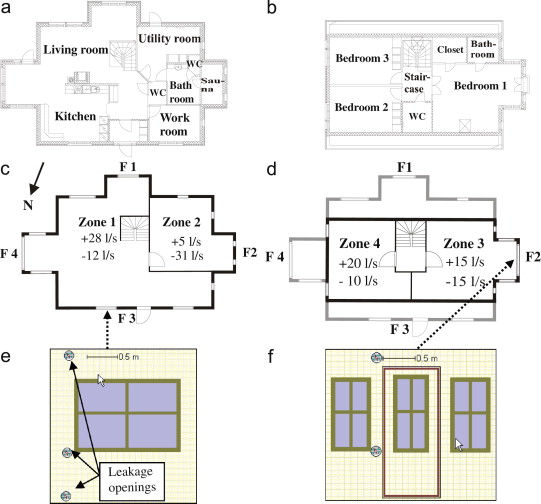Prefabricated Bridge Elements and Systems (PFBES)
Technology of production (construction) house factory-manufacturing (factory Built, off Site) is a significant segment of residential and commercial projects, and creates the possibility of acquiring your own house, all those for whom the house, built in the traditional way (on site, site built, stick built) are not available for financial or other reasons. A commercial (commercial) house building understands the technology of production (construction) buildings for conducting all business activities, such as office and retail buildings, room’s service, etc. In Russia, the technology of building a group of houses is almost unknown.
There are so-called "dwelling" only vaguely resemble what in other countries (USA, Canada, Sweden, Norway) called prefabricated houses.
The main difference between the construction of prefabricated houses and the traditional way is to answer the question of where and in what proportion are the main stages of assembly of the house (except for the construction of the foundation, although there are some changes.) Probation for a reference point you can take the time of completion of the zero cycle.
Today the most commonly used construction technology (manufactured) homes can be roughly classified as follows: Construction Technology (manufactured) home factory way: construction technology of mobile homes (mobile homes) construction technology of manufactured homes (manufactured homes) construction technology of modular homes (modular homes) Panel construction technology (panelized homes) production technology element wise blanks (precut homes) Building Technologies (production) home field method: technologies using prefabricated, ready-structural elements technology of masonry (brick, block or stone) (masonry) concrete panel technology (insulating concrete forms) technology monolithic housing (monolithic concreting) Technology panel construction (pre cast concreting) technology of frame and panel houses (wood frame stick built homes) This classification, with some differences in individual countries, commonly used in the English literature. She, however, suffers from some drawbacks and do not meet the generally accepted definition of comprehensive and separate classification.
The reason for this is to combine the two main criteria of classification.
On the one hand this construction technology (production) in the "pure" form.
On the other hand is the predominant building material.
In addition, it should be stressed that progress in housing in the last two decades, has blurred the clear distinction between these groups of building technologies.
A special role in this process panelize and standardization in manufacturing trusses and other structural elements of buildings.
The materials of the "Business Innovation" from the lack of established terminology, is used for several years, the term "bulk modular buildings" (OMZ). This term is considered a category of buildings lends itself to a modular building according to the classification above. On the other hand, the development of the manufacturing and housing appearance later so-called multi-section of manufactured homes erased a clear boundary that existed previously between modular homes and manufactory.
The distinguishing feature between the two types of technology (building) for housing, which can only be found in the U.S. and Canada, is a way of legislative regulation of their production and assembly process. In the U.S., there is no other than the framework, mandatory, national building codes.
These issues are the basis of the framework regulations are specified in the mandatory building codes at the state level and then at the level of administrative units that are part of the states. This is due to a variety of geographically applicable building codes, is a very important factor limiting the development of the industrial technology of housing, in particular the manufacturing.
Prefabricated "manufactory" at home it is fully assembled, and, in principle, ready to move in (complete) at home, delivered to the site on special road platforms, and then install on the prepared foundation. Unlike other production technologies, construction standards, rules and regulations in the U.S. and Canada require installation of manufactured homes on a fixed, steel frame, which is then connected to the construction site with the foundation.
In a situation where a dwelling place is unknown, the manufacturer denied the opportunity to bring home construction in compliance with local building standards, codes and regulations.
In 1974, the first one was a set of national building standards Federal Manufactured Home Construction and Safety Standards.
All matters relating to the execution of this law, as well as the procedure proposing to change it and was given the Ministry of Housing and U.S. policy (Housing and Urban Development, for short HUD). Therefore houses erected on technologies relevant requirements of this document, often referred to as "HUD Code homes".
Since that time, started the term "mobile" (mobile) to determine home, integrally related to a motor vehicle or permanently remaining on the wheeled platform, and a "manufactory" (manufactured) House moved on special platforms in place to install them on a permanent foundation. A distinctive feature of manufactured homes also from all others is the possibility of removing it from the ground up and moving to a new location, which is ensured by its design and the way to connect to the foundation.
In the U.S., the development of this type of housing for many years hampered the imperfection of the existing legislation, much of its discriminatory.
No less significant impact on the development of the technology of construction has been the lack of appropriate financial conditions, discriminatory zoning policies, and the provision of public services. You cannot, well, forget about the extremely strong conservatism in some regions of the U.S., as builders and consumers.
State support for this technology, and extensive media policy played an important role in accelerating its development.
Pre-Fabricated
Pre-Fabricated Building
Construction Technology































Vladimir Ivanov
Architecture
